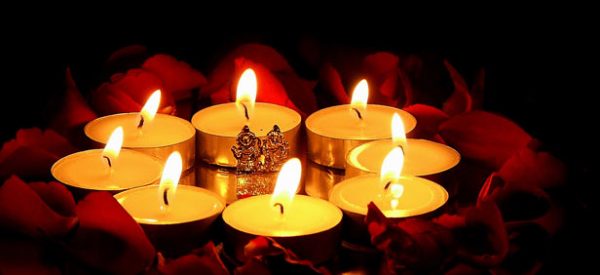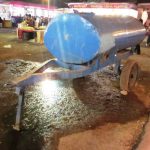India is a country with a heritage culture wherein lots of festivals are celebrated every other month. These festivals are celebrated with great zeal and are related to some or the other deity. Likewise, Diwali or Deepawali, festival of lights, is celebrated enthusiastically and brings hope and ecstasy among the Indians. It comes with the motive of triumph of good over evil and symbolizes the demotion of darkness and showing the path of light. It is not a one day celebration but an extension of five days. These five days are of much importance as every day is celebrated merrily in India and has its own significance.
It is believed that many events took place in the historic time which ultimately got connected with this festival over time. Various legends have contributed their part in merrymaking of this carnival and the reason behind celebrating Diwali varies in different parts of the country.

Some of the Mythological stories which are associated with the festive of lights are shared below. These stories are really interesting to know and everyone should at least have a look at them once.
-
Return of Lord Rama and Sita Maiya to Ayodhya
The most common and substantial reason behind Deepawali celebration was the return of Lord Rama to Vrindavan after saving Mother Sita from the clench of Ravana (the demon king of Lanka) and defeating him at his hometown. Ravan had kidnapped Sita during their exile after King Dashratha sent them to live in the woods for 14 years. After their return, the citizens of Ayodhya celebrated their come back and lit the whole city with lighting diyas.
-
Demolition of Demon Narakasura by Lord Krishna
The demon king of Pragjyotishpur (a province to the south of Nepal), Narakasur had managed to acquire ultimate powers and with these powers he began to threaten the three worlds. Eventually, he was defeated and killed by Lord Krishna. To symbolize the triumph, Lord Krishna smeared his forehead with the blood of Narakasur. He returned early morning on the day of Chaturdashi. After that, the lady folks massaged his body with scented oil and washed his body to remove the demon’s blood. Since then, this custom of taking oil bath early in the morning has become a traditional practice in different parts of the country.
-
Apotheosis of Mother Goddess Lakshmi
According to a historic mythology, the Mother Goddess Lakshmi on the new moon day (Amaavasya) of Karthik Shukla Paksh emerged from the ocean of milk called as Sheer Sagar during Sagar Manthan by the Gods (Devtas) on one side and demons (Rakshasa) on the other. She came with the gifts of wealth and prosperity for the humankind. In honor, Goddess Lakshmi’s pooja was done and as such from that day, this tradition is followed by the Indians.
-
Story of King Bali and Vaman Avatar
One of the stories includes King Bali and Lord Vishnu in the avatar of Vaman (a dwarf). King Bali was a generous hearted person in nature but he was very arrogant and boastful too. Many of the Gods approached and requested Lord Vishnu to teach the king a lesson.
Vishnu thus took the avatar of a dwarf priest and went to meet King Bali. He complimented the King with the world’s most powerful person and asked the king to give him that piece of land of land which covers his three footsteps. The king without thinking agreed to do the same. Thus, Lord Vishnu converted into his real avatar and covered the whole land, sky and the universe. The rest which was left for Bali was underground. So, King Bali was finally sent there.
-
Return of the Pandavas
Mahabharta, the Hindu epic says that the five Pandava brothers- Yudhishthhira, Bhima, Arjuna, Nakula and Sahdeva were sentenced to 13 years of exile after being defeated by the Kauravas- Duryodhana and his ninety nine brothers. After spending 13 years in forest they returned back to their kingdom on the new moon day i.e. on Karthik Amaavasya. To welcome them, the people of the kingdom celebrated their happiness by lighting lamps/diyas all over the city.
-
Crowning of King Vikramaditya
This is another story which again connects to the foundation for Diwali celebration. The greatest Hindu King- Vikramaditya was coroneted on this day of Karthik Amaavasya and his kingdom’s people celebrated this moment with the blessings of lighting tiny diyas.
Below are the festivals which are celebrated in five days along with Diwali and the some of the above mythologies are associated with these days.
Hope these stories help everyone in knowing the cause of celebrating this bright festival.
- The first day of Diwali starts with Dhanteras which is also known as Dhanvantri Triodashi. It is in fact the 13th day of Krishna Paksh and it is said that on this day Lord Dhanvantri came out of the ocean with Ayurveda for the benefit of mankind. This day marks the beginning of Diwali.
As we all know, “Dhan” relates to money, wealth. So, on this day, people buy new things from the market specially made of metal in the hope of bringing happiness and prosperity to their family.
- The second day is also known as Choti Diwali or better known as Narak Chaturdashi. On this day, Lord Krishna destroyed Demon Narkasur and made the world free from its fear.
So, on this day, people take oil bath in the morning and light lamps in the night and burn crackers.
- The third and the most important knock the entry of main festival Diwali or Deepawali. On this day, divine Goddess Lakshmi is worshiped by the people to achieve blessings of wealth and prosperity from her. This day is celebrated as the day of victory of goodness over evil and light over darkness. So, people merrily light lots and lots of diyas or lamps on this day and visit the market to enjoy the decorations of the market.
- Next day of Diwali comes the day of Govardhan Puja or Padwa. On this day, devotees build heaps of cow dung to symbolize the Govardhan Mountain that Lord Krishna lifted up with his finger to save the villagers of Vrindavan from rain. Also, this day is celebrated as Annakoot by the North Indians which represents as mountain of food.
- The fifth day is celebrated as the festival of Bhai Dooj. This is special day for all the sisters. It is believed that on this day, Yamraj(the Lord of death) visited her sister Yamuna. He blessed her sister with a gift that whoever visits her on this day shall be freed from all the sins.
From that day, brothers visit their sister’s house on this day and present gifts to them and enquire for their welfare.
This day also marks with the end of lighting lamps and celebrating five day festival.
Interestingly, in Jainism, the next day of Diwali is also embraced with the day of Mahavira Swami’s Nirvana. On this day, Lord Mahavira attained the knowledge of omniscience (Keval Gyana) and achieved Moksha at Pavapuri on Oct 15th ,527 B.C., on Karthik Chaturdashi. Thus, this day is also celebrated as the day of New Year by the Jainis.
All these Indian beliefs are considered to be the vital cause of celebration of the most awaited fiesta i.e. Diwali/Deepawali. After reading them, I think everyone will gain a little bit of knowledge for Diwali and the reason behind celebration it.


